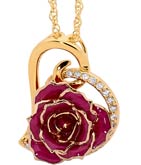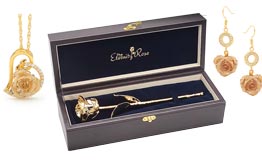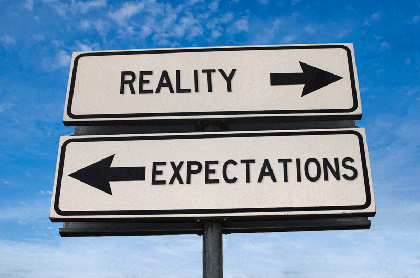Escape the Illusion that your partner will Change
When you find yourself trapped in an unhealthy relationship, it's common to hold on to the hope that your partner will change, especially during fleeting moments of harmony and happiness.
However, this hope can keep you ensnared in a harmful cycle. By fixating on the possibility of a better road ahead while disregarding the turbulent periods, individuals often become stuck without experiencing meaningful change.
In healthy relationships, there are natural ebbs and flows of harmony, disruption, and resolution. Conflict is managed with constructive problem-solving, ultimately strengthening trust in the relationship.
The Unhealthy Relationship Cycle
In the initial stages of most relationships, both partners typically present their most agreeable sides. This phase is marked by mutual discovery, and as feelings deepen, love grows, leading to commitment. However, data from thousands of individuals regarding their dating experiences suggest that minimal conflict occurs until they enter the committed phase of their relationship. This lack of conflict can create the illusion of a perfect match. Over time, though, issues inevitably arise, and couples who lack the tools to address these problems find themselves navigating turbulent waters.
Unhealthy relationships often manifest problems when one partner consistently:
1. Refuses to take responsibility and instead blames their partner, turning issues into their partner’s character flaws or deficiencies.
2. Emotionally withdraws, using silence as a means to punish the partner for perceived hurts.
3. Appears to take ownership of the problem but ultimately holds the other partner responsible for the problem.
4. Claims superiority and expects the final say, demanding agreement or silence from the other partner.
In response to these destructive behaviours, the hopeful partner may, despite lingering unease, welcome the return to a familiar, positive connection and give in to the destructive approach (eg, accept blame, beg the partner to break the silence, or pretend to agree with the partner), providing temporary relief. However, it's only a matter of time before another issue disrupts the calm.
The Deceptive Nature of Harmony
In this relationship cycle, the periods of "harmony" following disruptions become superficial "repairs" that foster false hope for change. These sporadic positive experiences create a powerful illusion, leading to the denial of serious underlying problems.
Embracing Conflict
Many people wonder how to avoid these problematic behaviours when seeking a partner. The answer lies in embracing conflict. During the dating phase, it is crucial to be authentic, express your desires and expectations, and engage in healthy disagreements. It is never healthy to be the one who always gives in or never communicates their needs. Conflict, when handled well, can be an insightful aspect of a potential partner's ability to resolve problems.
Thriving relationships are those that experience periods of disruption when conflicts arise, and both partners feel safe being themselves, communicating their needs, and knowing the other will listen and work together. True repair leads to a deeper and more trusting connection in the relationship.
Letting Go of Hope for Change
If you find yourself stuck in a relationship where there is no equal balance in how problems are resolved, it's vital to consider strategies for breaking free and regaining control over your life. Here are some practical steps to help you disentangle yourself from a relationship that no longer serves your well-being:
1. Self-Reflection
Begin by introspectively assessing the relationship. Are you genuinely happy, or are you just hoping for change? Reflect on your own needs, desires, and personal boundaries.
2. Seek Support
Reach out to friends, family, or a therapist who can provide you with emotional support and guidance. Talking to someone you trust can help you gain clarity on your situation.
3. Set Boundaries
Establish clear boundaries in the relationship and communicate them with your partner. Be honest about your feelings and needs. In some cases, this open communication might lead to positive changes.
4. Counselling or Therapy
Consider couples counselling or individual therapy to address the issues in the relationship. A professional can help you navigate your emotions and provide tools for resolving conflicts.
5. Weigh the Pros and Cons
Evaluate the relationship objectively. Weigh the positive and negative aspects to determine if the effort to salvage it is worth the potential benefits.
6. Legal Matters
If the relationship involves legal or financial entanglements, consult with a lawyer to understand your rights and responsibilities.
7. Plan for Independence
Begin making plans for your independence. This might involve finding a new place to live, securing financial stability, and building a support network.
8. Be Prepared for Change
Understand that breaking free from a long-standing relationship can be emotionally challenging. Be prepared for a range of emotions and seek professional help or support as needed.
9. Prioritise Self-Care
As you navigate the transition, focus on self-care. Engage in activities that bring you joy, practice mindfulness, and prioritise your mental and physical well-being.
10. Follow Through
Once you've made the decision to end the relationship, be resolute in your actions and follow through with your plans. Seek guidance from professionals, friends, or support groups if needed.
Conclusion
Breaking free from an unsatisfactory or even abusive relationship can be a challenging process, but it's often necessary for personal growth and well-being.
Remember that you deserve a healthy, fulfilling, and mutually respectful relationship. By taking these steps and seeking the right support, you can regain control over your life and move toward a brighter future.



















